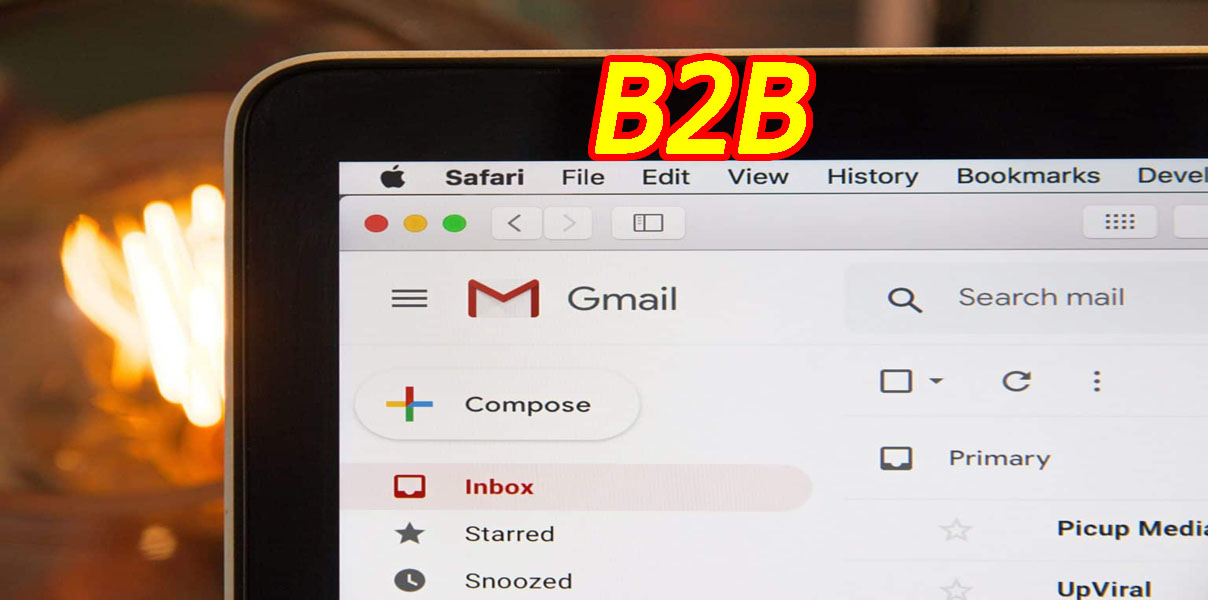B2B email marketing remains a powerful tool for businesses looking to engage with their audience, nurture leads, and drive conversions. A well-executed email marketing campaign can have a significant impact on your bottom line, but it’s important to develop a strategic approach to succeed.
This comprehensive guide will break down B2B email marketing best practices and help you create campaigns that actually get results.
Understand the Importance of B2B Email Marketing Despite the rise of social media and other digital marketing channels, email remains a highly effective form of communication for B2B companies.
According to HubSpot, the average open rate for B2B email campaigns is 21.33% and the click-through rate is 2.62%. These statistics show the potential reach and engagement that can be achieved through B2B email marketing.
Key benefits of B2B email marketing include:
Cost-effective: Email marketing is relatively inexpensive compared to other marketing channels, making it an attractive option for businesses on a budget.
Targeted communications: Email marketing allows you to segment your audience and send relevant content to specific groups, increasing the chances of engagement and conversion.
Relationship building: Email allows you to build relationships with your audience by providing valuable content, updates, and promotions.
Measurable results: Email marketing platforms provide detailed analytics to help you measure the success of your campaigns and optimize them for better performance. Creating a Successful B2B Email Marketing Strategy
A successful B2B email marketing campaign requires a clearly defined strategy. Here are some important steps to consider:
Define your goals: Before you launch an email marketing campaign, it’s important to set clear goals. Your goals could be to increase brand awareness, generate leads, increase sales, or nurture existing customers.
Identify your audience: To create relevant and engaging content, it’s important to understand your audience. Conduct thorough research to identify the needs, pain points, and preferences of your target audience. This information will help you create targeted email campaigns that resonate with your audience.
Segment your audience: Segmenting your email list allows you to send targeted content to specific groups based on factors such as industry, job title, behavior, and more. Mailchimp reports that segmented email campaigns have 14.37% higher open rates and 64.78% higher click-through rates than non-segmented campaigns.
Develop high-quality content: The success of your email marketing campaign depends heavily on the quality of your content. Focus on creating informative, engaging, and valuable content that caters to your audience’s needs and preferences. These could be blog posts, white papers, case studies, or promotional offers.
Design visually appealing emails: The design and layout of your email should be clear, professional, and visually appealing. According to Litmus, 46% of all emails are opened on mobile devices, so make sure your emails are mobile-friendly.
Personalize your emails: Personalization can significantly increase the effectiveness of your email campaigns. According to Experian, personalized emails have 29% higher open rates and 41% higher click-through rates than non-personalized emails. You can include recipients’ names, tailor your content to their preferences, and use dynamic content based on recipient behavior.
Test and Optimize: Continuously test and optimize your email campaigns to improve performance. A/B testing different subject lines, content, and designs can help you determine what resonates best with your audience. Make data-driven decisions based on campaign analytics and adjust your strategy accordingly.
B2B Email Marketing Best Practices
To ensure the success of your B2B email marketing campaigns, consider these best practices:
Write Compelling Subject Lines: Your subject line is the first thing your recipients see, so make it important. Use attention-grabbing words, be concise, and avoid capital letters and excessive punctuation. Campaign Monitor recommends keeping your subject lines under 65 characters to avoid being truncated in email clients.
Use a clear call to action (CTA): Use a clear and compelling CTA to encourage your audience to take the desired action. Make the CTA visually prominent and use action-oriented language to motivate your recipients.
Maintain a clean email list: Clean and update your email list regularly to remove inactive subscribers and incorrect email addresses. A clean email list helps you maintain a good sender reputation and ensures that your emails reach your audience’s inboxes. Send emails at the right frequency: Too many emails can lead to unsubscribes, while too few emails can lead to missed opportunities. Find the right balance for your audience by analyzing engagement metrics and adjusting your sending frequency accordingly.
Comply with email marketing regulations: Make sure your email marketing campaigns comply with relevant regulations, such as the CAN-SPAM Act in the United States and the GDPR in the European Union. This includes providing a clear unsubscribe link with a physical email address and obtaining appropriate consent from your subscribers.
Real-life examples of successful B2B email marketing campaigns
Salesforce: Salesforce regularly sends high-quality, personalized content, such as case studies, industry news, and product updates to its subscribers. Visually appealing email design combined with clear CTAs contribute to email marketing success.
HubSpot: HubSpot email marketing campaigns deliver valuable resources like e-books, webinars, and blog posts tailored to your audience’s preferences. Use eye-catching subject lines, personalized content, and well-designed templates to retain your subscribers.
Conclusion and next steps
When executed strategically, B2B email marketing can be a highly effective channel for achieving results. By understanding your target audience, creating high-quality content, and following best practices, you can develop email campaigns that engage recipients and drive conversions. When it comes to your B2B email marketing efforts, remember to continually test, analyze, and optimize your campaigns to achieve the best results.








